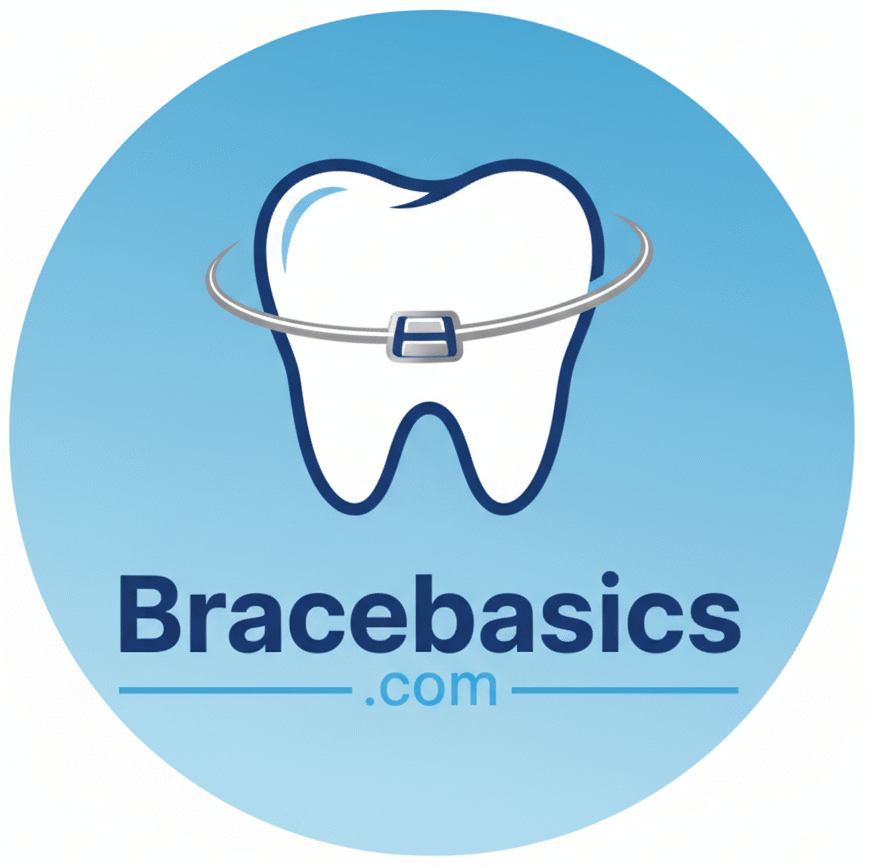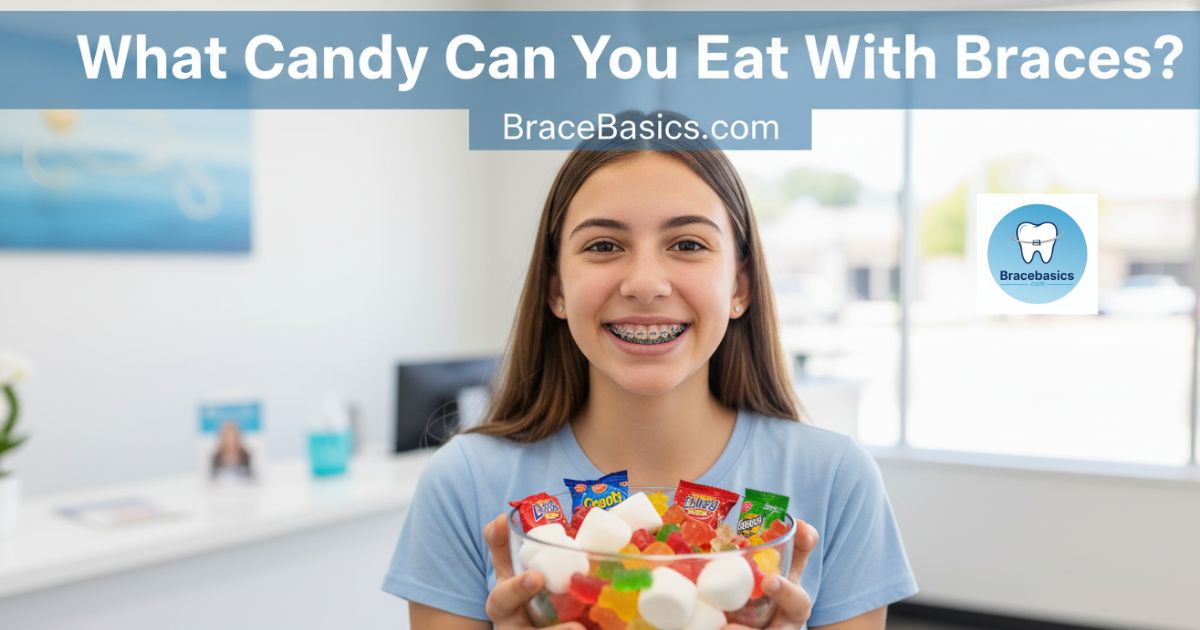What candy can you eat with braces is one of the first questions patients ask when starting orthodontic treatment. Candy is loved by kids, teens, and even adults, but wearing wires and brackets changes how you enjoy sweets. Eating the wrong candy can cause broken braces, painful orthodontic emergencies, and long-term issues like cavities, gum disease, and plaque buildup.
The good news is you don’t have to give up sugar completely. There are plenty of braces-friendly candy options and safe candy for braces that satisfy your sweet tooth without harming your smile. In this guide, you’ll discover which treats are safe, which ones to avoid, and the best advice from experienced orthodontists to protect your teeth.
So let’s dive into the sweet truth about what candy you can eat with braces.
Understanding Braces and Why Candy Matters
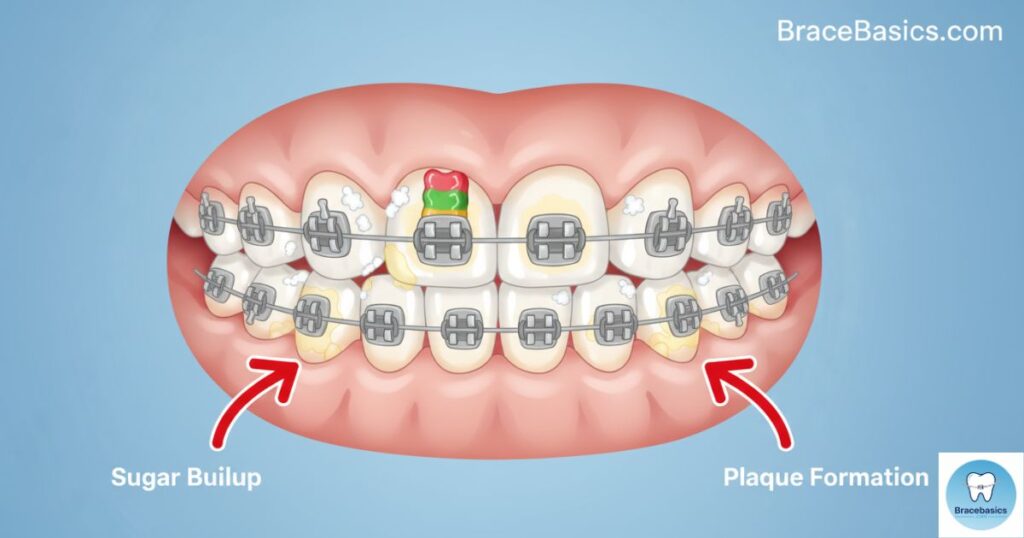
When you wear braces, your teeth are moving slowly into a better position. The wires and brackets attached to your teeth are delicate. Hard, chewy, or sticky foods can pull them loose. That’s why certain candies, like Jolly Ranchers, Starbursts, Skittles, caramel, and licorice sticks, often end up on the “do not eat” list.
Candy also feeds bacteria in your mouth. Sugar sticks to tooth enamel and creates plaque buildup. Without proper dental hygiene, this plaque can harden and cause gum disease, cavities, or even tooth discoloration. With braces, it’s harder to clean, so you’re more at risk. Using fluoride toothpaste, fluoride mouthwash, and a floss threader is necessary to fight this.
Think of it this way: candy isn’t always the enemy, but the wrong type of candy becomes a trap for your smile.
What Candy Can You Eat With Braces?
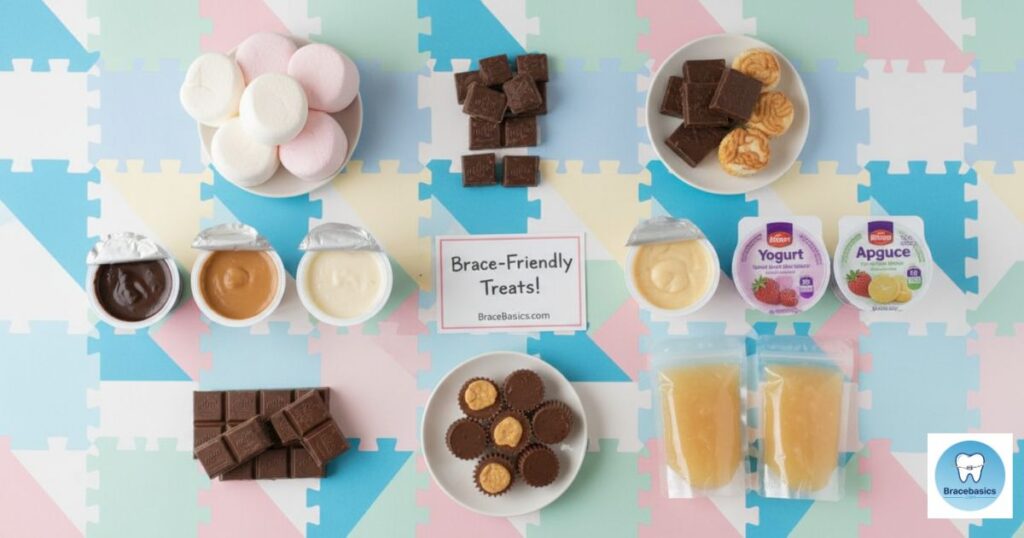
Many people believe all candy is off-limits. That’s not true. You just need to focus on sweets that don’t damage braces. Soft options like marshmallows, soft chocolates, chocolate bars without nuts, pudding, yogurt, gelatin, ice cream, and peanut butter are considered braces-safe desserts. These treats melt or soften in the mouth, which reduces stress on wires and brackets.
For example, instead of biting into a hard chocolate bar, choose soft chocolates or melt-in-the-mouth candies. Instead of sticky candies like gummy candies, caramel, or fruit roll-ups, try smoother textures like applesauce or smoothies. You can still enjoy sweetness without worrying about a broken bracket.
Here’s a simple breakdown in a table:
| Candy Category | Safe for Braces | Dangerous for Braces |
| Soft Chocolates | Yes | No (if with nuts/caramel) |
| Marshmallows | Yes | No (if coated in hard sugar) |
| Pudding/Gelatin | Yes | No issues |
| Caramel | No | Too sticky |
| Gummy Candies | No | Stick between teeth |
| Jolly Ranchers | No | Hard candy problems |
| Ice Cream / Frozen Yogurt | Yes | Safe and soft |
| Peanut Butter | Yes | Smooth only (no nuts) |
Hard Candy Problems and Sticky Candy Risks
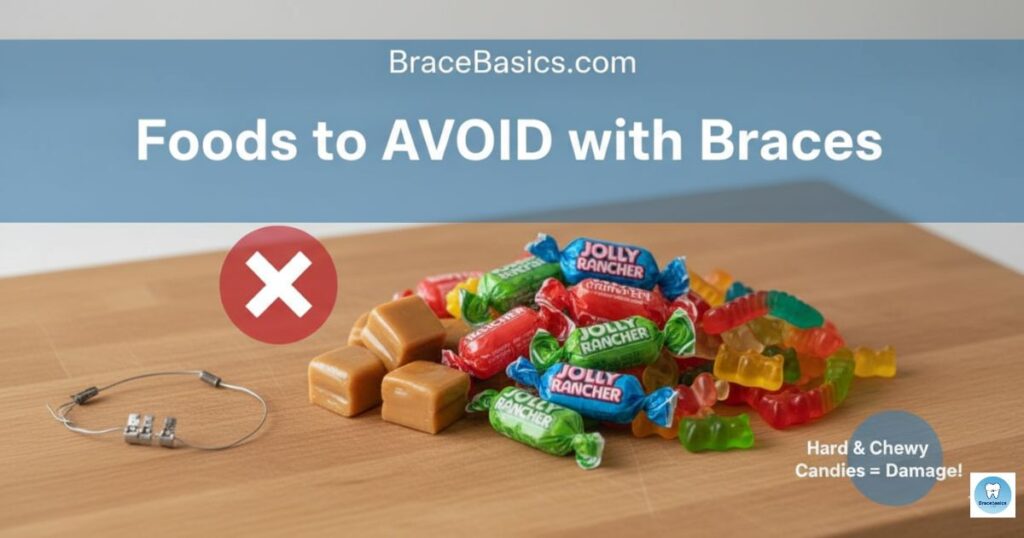
One of the biggest issues I see is kids breaking a bracket after eating hard candies like Warheads or Jolly Ranchers. These candies require too much biting pressure. When you crunch down, it’s like trying to snap a piece of metal with your teeth — the braces don’t stand a chance. This leads to orthodontic emergencies, extra visits, and sometimes extra costs.
Sticky candy risks are equally dangerous. Caramel, licorice sticks, fruit roll-ups, Starbursts, and gummy candies cling to every corner of your mouth. They slide under wires and brackets and stay there. The sugar then feeds bacteria and leads to plaque buildup and cavities. I’ve had patients who thought brushing once was enough, but the sticky sugar stayed hidden, and we had to deal with early gum disease.
Braces-Friendly Candy and Safe Sweets
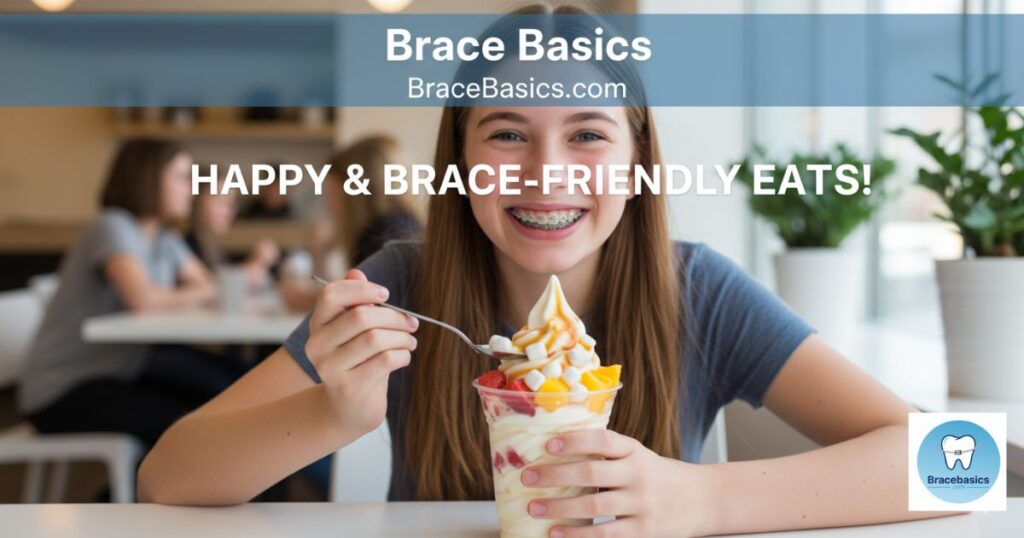
So what are the true braces-friendly treats? Dentists often recommend:
- Soft chocolates like Hershey’s bars (without nuts or caramel).
- Marshmallows that melt easily.
- Smoothies with fruits and yogurt.
- Pudding and gelatin for creamy sweetness.
- Ice cream or frozen yogurt, but watch out for toppings like nuts or crunchy candy pieces.
- Applesauce or soft fruit blends.
These treats are part of the best snacks for orthodontic treatment because they don’t stress your wires and brackets. They also reduce the chance of causing an orthodontic emergency from candy.
Candy Alternatives for Braces
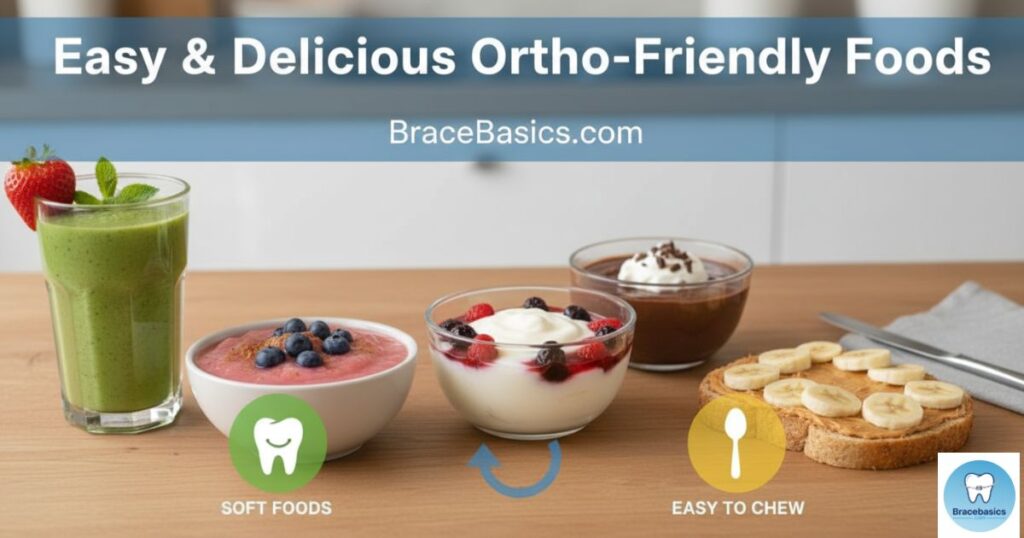
When the craving for sweets hits, you don’t always need candy. Candy alternatives for braces are just as enjoyable, sometimes even healthier. Parents in Lincoln, NE often give their kids chilled smoothies, yogurt cups, soft baked goods, peanut butter spreads, or even homemade fruit puddings.
Here’s a fact: kids who replace sticky candies with soft snacks usually have fewer orthodontic visits and cleaner tooth enamel. It’s easier to prevent discoloration when sugar is reduced.
For example, instead of a Skittle or Sour Patch Kid, blend strawberries with yogurt and honey. It satisfies the sweet tooth while keeping teeth safe.
Chocolate and Braces: A Sweet Exception
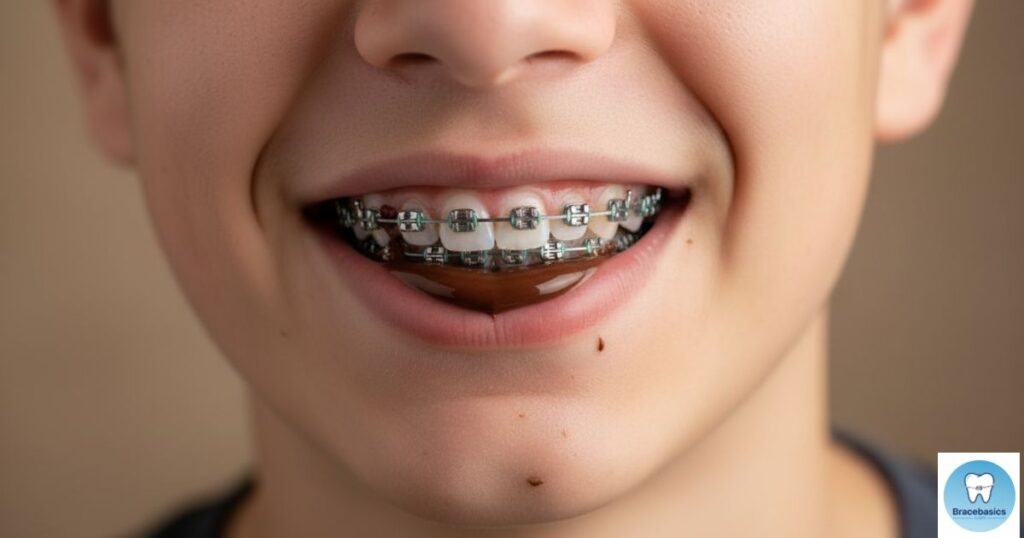
Many teens ask: “Can I eat chocolate with braces?” The answer is yes, with conditions. Chocolate and braces go well together if you stick to soft chocolates that melt quickly. Avoid chocolate bars filled with caramel, nuts, or toffee since those bring sticky candy risks.
Chocolate is actually better than hard candies because it washes away faster and doesn’t linger as much on tooth enamel. A quick rinse with water or fluoride mouthwash afterward helps protect dental hygiene.
A fun case study: one of my patients at Rallis & Bonilla Orthodontics ate a small square of chocolate after dinner each night but brushed right after. Her braces stayed intact, and she had no cavities during her two-year treatment.
Braces Oral Hygiene After Eating Candy
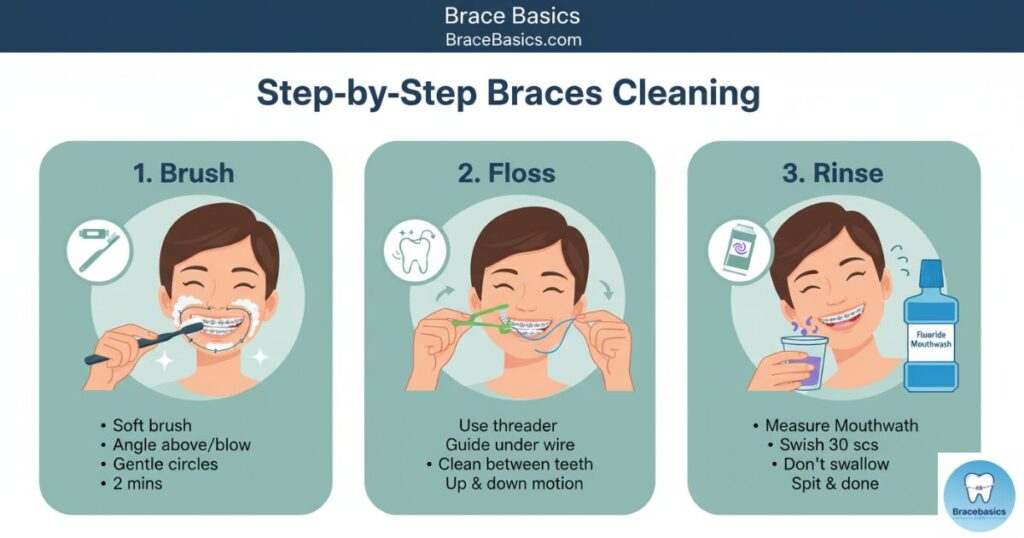
No matter what candy you choose, braces oral hygiene must be strict. Sugar always increases the risk of plaque buildup, gum disease, and cavities. That’s why brushing after eating candy is essential.
Here’s the proper routine:
- Brush gently with fluoride toothpaste.
- Use a floss threader to clean around wires and brackets.
- Rinse with fluoride mouthwash to protect tooth enamel.
- Wear a mouthguard if you play sports, especially if candy weakens your teeth.
- Keep up with orthodontic visits every 4–6 weeks.
Think of your teeth like a car engine. Candy is the fuel, but without cleaning, the engine gets clogged. The same goes for your smile.
How to Brush Teeth with Braces?
Foods to Avoid With Braces Completely
Now let’s get clear. Some foods are just not worth the risk during orthodontic treatment. These include:
- Popcorn (kernels get stuck and break brackets).
- Hard candies like Warheads, Jolly Ranchers.
- Sticky candies like caramel, gummy candies, licorice sticks, fruit roll-ups, Starbursts.
- Chewy sour candies like Sour Patch Kids and Skittles.
These treats cause the most orthodontic emergencies. Many patients regret eating them when they face extra costs, delays in treatment, or painful wire pokes.
Orthodontist Advice on Candy
Most orthodontists agree: it’s not about banning candy forever, but about balance. Occasional treats are fine as long as you choose braces-friendly candy and keep up with dental hygiene.
Dr. Rallis from Rallis & Bonilla Orthodontics in Lincoln, NE says: “Candy itself isn’t evil. It’s how and when you eat it. If you clean well afterward and avoid sticky or hard candies, your braces will stay safe.”
That’s the key. Listen to your orthodontist advice on candy. Every mouth is different, and sometimes an adjustment in diet makes all the difference.
Conclusion
So, what candy can you eat with braces? The safest answers include soft chocolates, marshmallows, pudding, gelatin, smoothies, applesauce, yogurt, and frozen treats. These are the braces-friendly treats that don’t damage your smile. On the other hand, hard candies, sticky candies, chewy candies, caramel, licorice sticks, fruit roll-ups, Skittles, Starbursts, Sour Patch Kids, and Jolly Ranchers are the troublemakers.
Protecting your dental health with braces means making smarter choices. You don’t need to give up sweets forever. You just need to pick the ones that won’t harm your tooth enamel, discoloration prevention, and orthodontic treatment progress. With careful choices, your braces journey can stay sweet — without turning into a sour memory.
Can You Eat Chips with Braces Safely?
FAQs
Can you have Starburst with braces?
No, Starbursts aren’t safe for braces. They’re sticky, chewy, and full of sugar. When you bite into one, the candy pulls against your wires and brackets, which can cause them to loosen or break. Starburst also sticks between teeth and leads to plaque buildup and cavities. It’s best to avoid them completely.
What sweets can you not eat with braces?
You should avoid hard candies, sticky candies, and chewy treats. That means things like Jolly Ranchers, Skittles, caramel, licorice sticks, gummy candies, Sour Patch Kids, Starbursts, and popcorn. All of these put pressure on your braces or get trapped in small spaces, which can damage your teeth and cause gum disease or an orthodontic emergency.
Can you lick lollipops with braces?
Technically, licking a lollipop without biting into it won’t break your braces. The problem is the sugar. When candy sits in your mouth for too long, it coats your tooth enamel and increases the risk of cavities and discoloration. If you absolutely must have one, don’t chew it, and rinse with water right after.
Are Reese’s good for braces?
Yes, Reese’s are one of the safest candies for braces—as long as you stick to the smooth peanut butter cups and not the crunchy versions. They’re soft, melt quickly, and don’t stick aggressively to wires and brackets. Just remember to brush afterward, since even safe candies can leave sugar behind.
Can You Eat Pizza With Braces?
Yes, you can eat pizza with braces, but not every type is safe. Soft-crust pizza with light toppings is fine, because it doesn’t put too much pressure on your wires and brackets. The problem comes with hard crusts, chewy edges, or sticky toppings like extra cheese. Biting into those can bend a wire or pop a bracket off. Also, crunchy toppings like pepperoni or sausage may get stuck between teeth, leading to plaque buildup and gum irritation.
If you want to enjoy pizza without trouble, cut it into small pieces and chew with your back teeth. Avoid biting directly into the crust, and clean your teeth afterward. This way, you’ll satisfy your craving without risking an orthodontic emergency.
Can You Chew Gum with Braces?
Most gum isn’t safe with braces. Sticky gum wraps around your wires and brackets, pulling them out of place and creating an orthodontic emergency. It also increases the risk of plaque buildup and weakens tooth enamel. That’s why dentists usually say no.
However, there’s one exception—sugar-free gum for braces. Studies show that chewing sugar-free gum can boost saliva flow, which helps wash away food and protect against cavities. Brands with xylitol are even better, since they reduce harmful bacteria. If you decide to chew, make sure it’s sugar-free and chew gently to avoid pressure on your braces.

Hi, I’m Dr. Martin, the founder of BracsBasics.com. With years of experience in orthodontics, I’ve made it my mission to simplify braces care for patients of all ages. Here, you’ll find easy-to-understand advice, practical tips, and reliable resources to make your braces journey smoother, healthier, and stress-free. My goal is to help you smile with confidence every step of the way.
